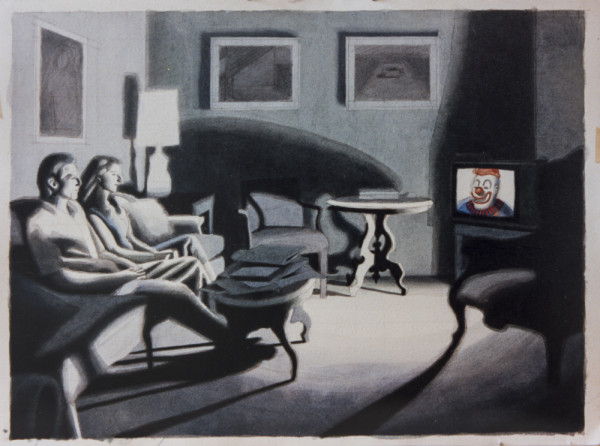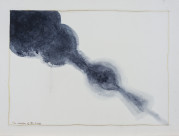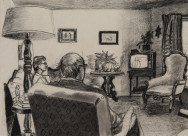At first glance, it is unclear how the painting, Clown fits in with the rest of The Accident series, as almost all the other images feature cars or wharves. It is true, Robert has placed his “Wharf” image on the back wall alongside Edward Hopper’s Sunlight in an Empty Room. Otherwise the image is a close reworking of an earlier drawing, Six O’Clock News. That image served as a critique of TV as family icon and featured Robert’s parents as an earnest couple who religiously watched the supper-hour news. This was one of the few times of day when his parents were not working. Robert was himself a driven person and feared he might fall into similar patterns.
In Clown, Robert no longer judges his parents but now sits in their place alongside his sister Janet, whose aversion to TV was, if anything, sharper than his own. Psychologist Carl Jung developed a theory of the shadow, the rejected or unconscious side of a person’s identity. Jung’s shadow represented the denial of important life forces. The process of healing is one of opening oneself up to the universe, embracing contradiction, seeking wholeness in place of division.
The clown on the TV could be read as Robert’s shadow–the lighter, fun-loving self that he has rejected in his desire to be seen as a serious artist. The clown is the flip side of tragedy. Robert’s cancer experience is tragic and he challenges himself to see beyond the darkness. In Memories, Dreams, Reflections, Jung argued that the shadow is hurtful when ignored; when acknowledged, it becomes “the seat of creativity” and “the true spirit of life against the arid scholar.”


